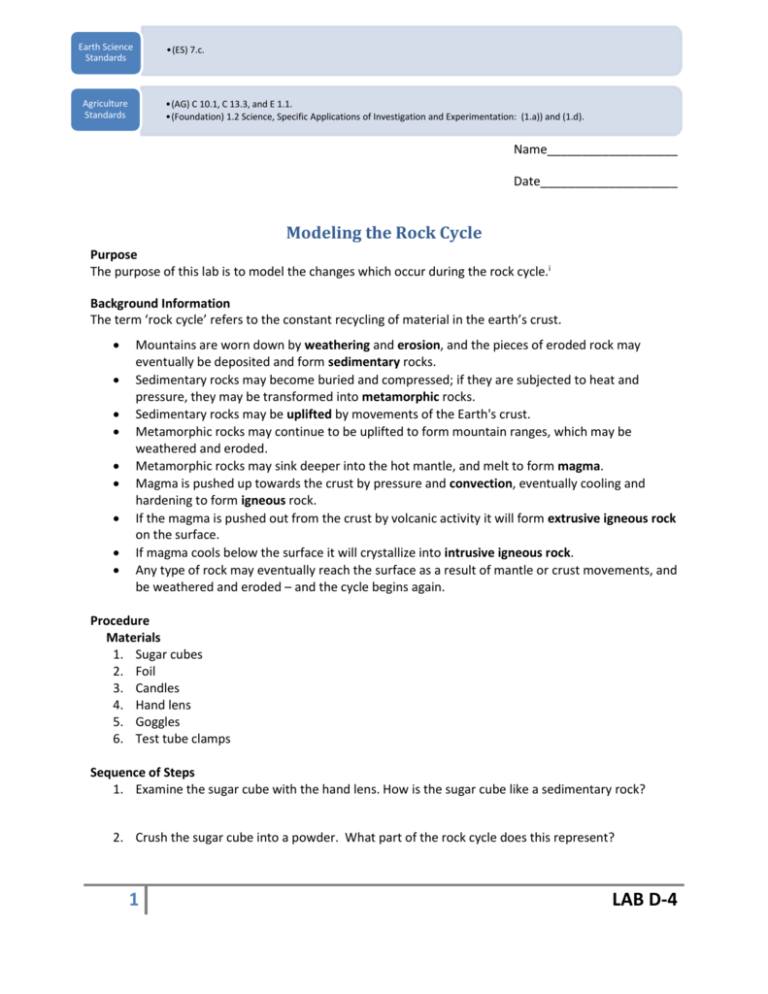D-4 Modeling the Rock Cycle
advertisement

Earth Science Standards •(ES) 7.c. Agriculture Standards •(AG) C 10.1, C 13.3, and E 1.1. •(Foundation) 1.2 Science, Specific Applications of Investigation and Experimentation: (1.a)) and (1.d). Name___________________ Date____________________ Modeling the Rock Cycle Purpose The purpose of this lab is to model the changes which occur during the rock cycle.i Background Information The term ‘rock cycle’ refers to the constant recycling of material in the earth’s crust. Mountains are worn down by weathering and erosion, and the pieces of eroded rock may eventually be deposited and form sedimentary rocks. Sedimentary rocks may become buried and compressed; if they are subjected to heat and pressure, they may be transformed into metamorphic rocks. Sedimentary rocks may be uplifted by movements of the Earth's crust. Metamorphic rocks may continue to be uplifted to form mountain ranges, which may be weathered and eroded. Metamorphic rocks may sink deeper into the hot mantle, and melt to form magma. Magma is pushed up towards the crust by pressure and convection, eventually cooling and hardening to form igneous rock. If the magma is pushed out from the crust by volcanic activity it will form extrusive igneous rock on the surface. If magma cools below the surface it will crystallize into intrusive igneous rock. Any type of rock may eventually reach the surface as a result of mantle or crust movements, and be weathered and eroded – and the cycle begins again. Procedure Materials 1. Sugar cubes 2. Foil 3. Candles 4. Hand lens 5. Goggles 6. Test tube clamps Sequence of Steps 1. Examine the sugar cube with the hand lens. How is the sugar cube like a sedimentary rock? 2. Crush the sugar cube into a powder. What part of the rock cycle does this represent? 1 LAB D-4 3. Make a boat with your foil. Pour the crushed sugar into the foil boat. What part of the rock cycle does this represent? 4. Using the test tube clamps to hold the foil boat over the candle flame. Observe as the sugar melts. What part of the rock cycle does this represent? 5. Break the cooled harden sugar into pieces. What part of the rock cycle does this represent? 6. Break the cooled and hardened sugar into pieces. What part of the rock cycle does this represent? 7. What are some observations you made when the sugar was put under a flame? 8. Complete the rock cycle below by labeling and coloring the different arrows. i Prescott, Diane (2008). Modeling the Rock Cycle, Lab. Atwater High School Ag Dept. 2 LAB D-4







